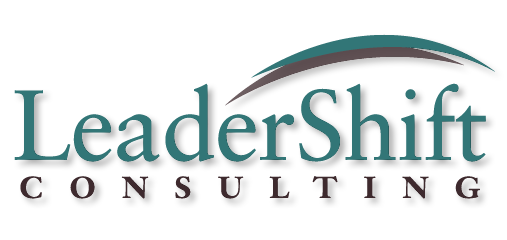Authenticity 2.0
Authenticity at work: is that an oxymoron? A pipedream? Most of us long to be more authentic at work, yet in most organizations, authenticity is in short supply.
Here’s a quick exercise that illustrates why that might be so. Identify a current work situation that you think is being badly handled but that you haven’t confronted. If you had a free pass to react authentically – with no threat of repercussion – what would you do? Now… if you actually did or said that, what do you think would happen? For many of us, that much honesty could constitute career suicide.
This is the double bind of authenticity. We long for it, but it’s risky. So we resign ourselves to the belief that being who we really are is only possible in ‘enlightened’ organizations – which is certainly not where WE work.
Part of our problem is that we define authenticity in a very limiting way. Many people equate it with ‘full transparency.’ But this can easily slide into spewing our thoughts, feelings and judgments onto others, all in the name of being true to ourselves. Don’t get me wrong. Sharp honesty has its place; it can clear the air and let people know where you stand. But simply letting it all hang out backfires a lot: escalating conflict and misunderstanding, eroding trust, and damaging reputations. You’re smart to be wary of that.
So what are our choices? ‘Let it rip’ or ‘zip it?’ Ugh.
A new option has to begin with a new perspective. Rather than defining authenticity as ‘full transparency,’ what if we see it as ‘speech and actions that arise from our deepest values?’ That’s a very different proposition. This requires discipline, restraint, clarity and skill. It allows us to be true to ourselves and to connect meaningfully with others, without doing harm or selling ourselves out.
What would that look like in practice? Gwen, a client of mine, gave me a living example. She was a self-employed consultant, and had signed on as a subcontractor to a larger consulting firm. She was about to undertake her first assignment for that firm, and had negotiated the rates and terms for the project. The day before the work was set to begin, her phone rang. It was the firm’s project manager. He said, “Gwen, I hate to tell you this, but we just got the final paperwork from our client today, and the approved budget is 30% less than they agreed to verbally. So although we promised you $X, we can only pay you 70% of that.”
Gwen was genuinely and legitimately furious. If she had defined authenticity simply as “full disclosure,” Gwen would likely have responded with some pretty unsavory words. But with the client expecting work to begin the next day, and with a new work relationship in the balance, Gwen had a lot at stake. She wanted to be truthful in her response, but she also wanted to be skillful. She called me to help her sort it out.
I asked her two questions; here’s how she worked with them.
- What deeply-held values do you want your response to reflect? “This is my first engagement with this firm, so I want my actions to communicate that I’m not a doormat, that this is really not OK with me. Second, I believe that those who mismanaged the process should bear the largest burden of the mismanagement. Third, I want my actions to communicate empathy and my commitment to this team. This has put us all in a tough position, and I care about both the client and my relationships at the consulting firm.
- What can you say or do that will successfully reflect those values? “I want the project manager to understand where I’m coming from, so I’ll start by sharing the principles driving my response. Then I’ll offer this proposal: I’ll carry on with the project, because I don’t want to leave the client in the lurch. But I won’t agree to take a 30% cut in my rate. But I will decrease my fees by 10% to acknowledge that I care about this relationship and that we’re all in this together.”
The result? The firm gratefully agreed to Gwen’s terms. As a result of how she handled the situation, Gwen also gained the reputation as the ‘most ethical and principled’ of all the firm’s subcontractors. Her influence and political capital at the firm remained very high for the life of the working relationship.
Gwen had acted authentically. Identifying and acting on her deeper values had been the key. Had she responded simply with emotional transparency, the relationship would likely have ended in a firestorm of blame and resentment. Gwen was true to her anger – not by spewing it, uncensored, but by using it to identify what really mattered to her and behave in a way that reflected that.
Could values-based authenticity work for you? Take the situation you identified at the top of this article, and see what happens when you look at it through the lens of the two questions. Does it show you something new about yourself, the situation, or how you might respond? Let us know!



When I first started reading this I thought – uh authenticity because our emotions on both the receiving and giving ends can create bad authenticity. However, seeing the example and seeing that you had Gwen take a step back, look at what was truly upsetting her and then making a plan to convey was excellent.
I’ve been depressed this past week about my dentist bill. It was one quote and then when I came in for treatment it was more than double. I was between a rock and a hard place because the tooth really needed fixing. I wish I handled it in the way you described here. I have decided to leave the practice because of it (after I finish treatment). With all that said, I think I will leave telling them why.
What an inspiring definition and conclusion: ” What if we see it as ‘speech and actions that arise from our deepest values?’ That’s a very different proposition. This requires discipline, restraint, clarity and skill. It allows us to be true to ourselves and to connect meaningfully with others, without doing harm or selling ourselves out.”
It’s a very powerful example that you present here.
Would it be OK with you if I share the example with other people? I’m thinking about online in the first place, but in my work as a trainer it could also be handy to create a handout with your blog address on it. My trainings are mainly with Dutch people (if that’s relevant for you). I’m thinking about the one on influencing skills, where we also talk about and work with values.
Hi, Angela. Thank you so much for you kind and thoughtful comments! Thanks so much for asking permission to share this with others. As long as I receive credit as the author. I’m totally fine with it. And a plug for my blog would be a lovely perk! Thank you.
In general, it seems that we swim in similar waters professionally – we should find a time to connect some time to learn about each other’s work and look for ways to support each other.
Great idea Leslie!
I just mentioned your blog on my blog on co-active coaching, I’d like more people to read it.
Leslie, your coaching questions really cut through the noise and provided much valued clarity. I will definitely use these questions in the future. Thank you!